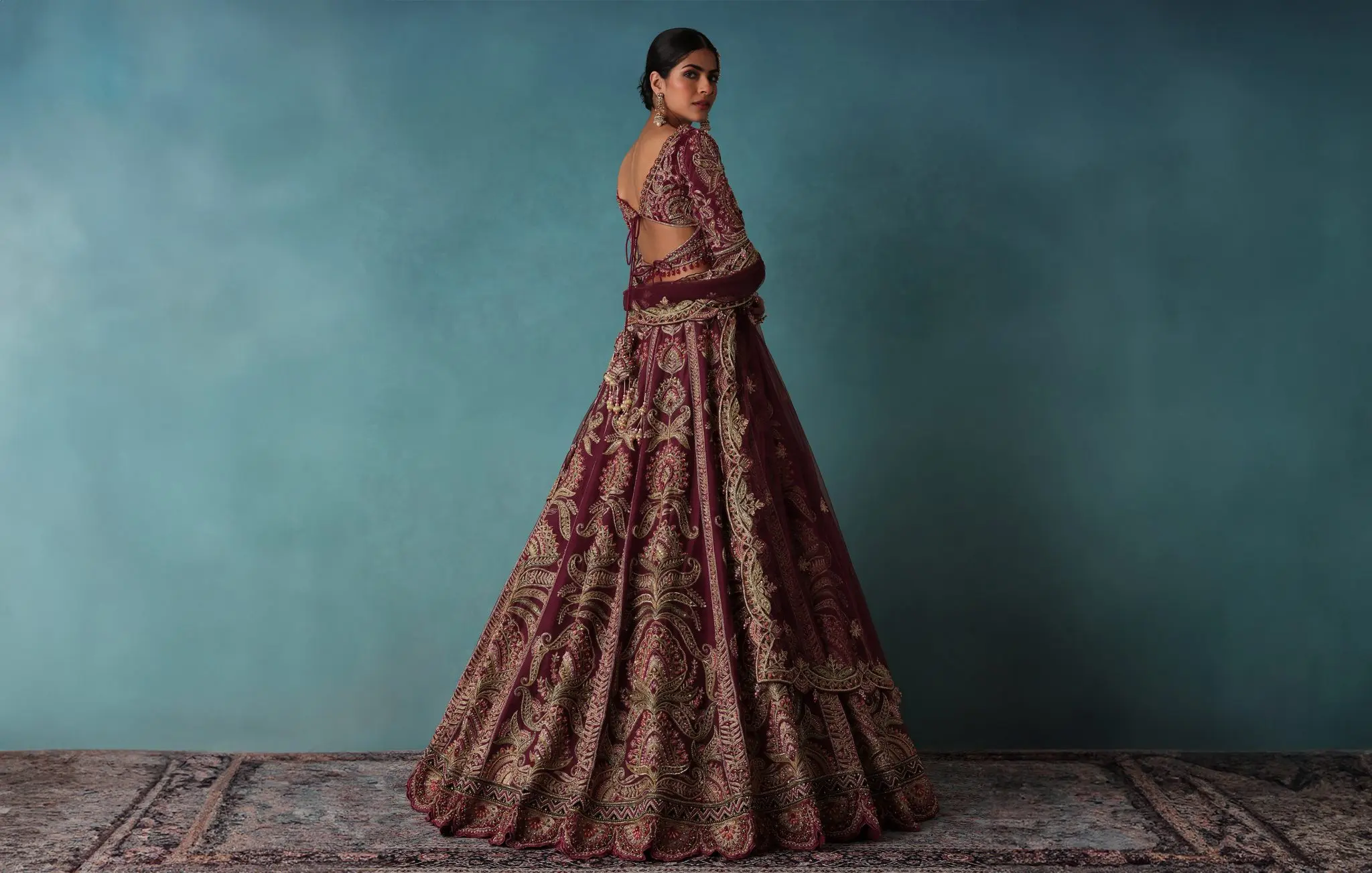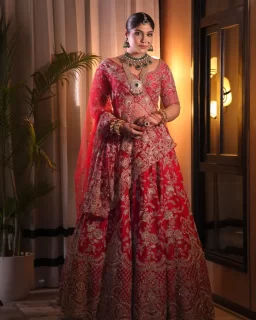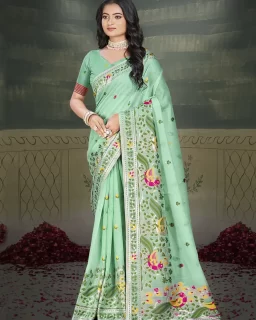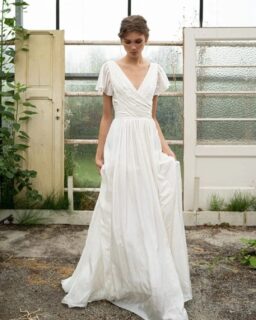Fashion
How Radhika Jain followed her dream of building MiRA

Radhika Jain, creator of MiRA, the jewellery label that blew everyone away at a recent showcase, gives an exclusive interview to FWD Life
Pleasant, polite and exuding elegance, Radhika Jain is the quintessential lady and FWD Life had the pleasure of meeting her and experiencing her jewellery collection, ‘Garden of Eden’, at the Lakmé Fashion Week Summer/Resort 2017. Later, we spoke about her jewellery, the brand, MiRA; an inspiring conversation with a woman exploring her creativity.
Let’s start with something everybody wants to know. What, would you say, was the inspiration behind “Garden of Eden” and were you able to realize that in your collection?
As a child, I was always surrounded by gardens, there was one at home, and then there were those floral sarees that my mother used to wear. I think I was very close to nature as I grew up, and so the “Garden of Eden” just seemed to stem from that. And you can see that from all the birds and the roses I seem to have included in my collection.
And what materials did you use this time?
I mainly used synthetic ivory and gold-plated metal. But it was all handcrafted. And even though it was artificial ivory, the artisans had to be experienced in working with real ivory and use those same techniques while working with this material.
Was the similarity with Kerala’s traditional clothing, the ivory and gold, intentional?
Perhaps. I try to give importance to the culture of Bengal, and maybe that’s why there is a similarity. There is a lot of ivory used in Bengal too, the shakha pola, for example, that married women wear.
How long have you been designing jewellery? Was there a turning point, when you realised this is what you simply had to do?
It’s been six to seven years now. And there was definitely a turning point, which was completely by chance. I was a science student and had intended to pursue medical studies, but instead, while at my grandparents’ home one summer holiday, I saw my cousin making jewellery. I was fascinated, and got completely hooked.
How did you decide on the name – MiRA?
Oh that was a combination of things. It’s primarily a tribute to Ra, the Egyptian Sun God and stands for creativity, power and individuality. Also, it’s a combination of my name and that of the person who taught me jewellery design.
How would you describe the woman who chooses to wear MiRA?
I want the woman who wears MiRA to be confident in herself. She should be connected to her roots, and be a person who is a bold, independent individual. A complete lady, in my opinion. I’m not saying that only a particular set of people can wear MiRA. Anyone can. But when a woman chooses MiRA, maybe she becomes all this too.
How long does the process – from conceptualisation to final product – of creating one piece of jewellery take?
If a piece is being repeated, then it will be ready within a month. But if you’re talking about the entire process beginning with the conceptualisation of the piece, it’s design, the technicalities involving the different craftstmen who work on a single piece, then it easily takes two to three months, especially since you need to be particular about the quality of each aspect of the piece.
Do you have any advice for aspiring jewellery designers?
My advice to them is- “be original”. I haven’t had any formal training in jewellery design, so a lack of formal training, I can safely say, is no hurdle. They shouldn’t categorise themselves as traditional or modern, but be open to every possibility. What they should focus on, is their work, drawing inspiration from things around them, without having to copy the work of others. They should be versatile, use new materials, or old materials in new ways. That is the art of design.
To read the complete interview, subscribe to our digital copy: https://goo.gl/HGTOLN
Images: Various sources
Fashion
Bridal Guide: Top Bridal Fashion Trends of 2025

Bridal fashion in 2025 is all about redefining tradition with a touch of modern flair. Whether you’re planning your big day or just love bridal style, here’s a quick look at this year’s top trends.
1. Modern Lehengas

Traditional lehengas get a fresh upgrade with 3D florals, bold shades like mauve and emerald, and rich fabrics like velvet. Expect classic silhouettes with unexpected color and texture combos.
2. Satin Minimalism

Sleek satin gowns are in. With clean lines, off-shoulder cuts, and subtle details, they radiate elegance for brides who prefer understated glam.
3. Sarees, Reinvented

Think tulle, organza, ruffles, and structured blouses. The timeless saree is going experimental — and it’s stunning.
4. Sustainable Bridal Wear

Eco-friendly fabrics, recycled embellishments, and upcycled jewelry are gaining traction, combining beauty with conscience.
5. Vibrant Color Palettes

Brides are ditching reds for lavender, emerald, and blush tones. Layered hues bring personality and vibrancy to the aisle.
Bridal Style, Reimagined
2025 bridal fashion is bold, elegant, and deeply personal. Whether you’re leaning classic or contemporary, this year is all about owning your bridal moment — your way.
Fashion
The Year of Statement Hat

When Anya Taylor-Joy stepped out at this year’s Cannes Film Festival in Jacquemus’ Le Chapeau Bomba, a delightfully oversized raffia hat it was clear that this accessory had become the season’s ultimate statement piece. The fall 2024 runways echoed this sentiment, with Chanel and Prada showcasing hats as the new must-have. Think of Sarah Jessica Parker’s oversized Maryam Keyhani creation, worn on the set of And Just Like That… earlier this year, or Margaret Qualley donning Chanel’s nautical style at Cannes. These hats are for the main characters who command attention, making a bold statement long before you arrive.
Altuzarra’s fall 2024 collection featured boxy headpieces on some models, each designed to evoke a specific character. “It was about finding joy in wearing a complete look, fully embodying a character,” explains designer Joseph Altuzarra. Interestingly, this was the label’s first foray into hats beyond casual knit and woven styles. ‘We didn’t plan to sell them,’ Altuzarra admits, ‘but they ended up being a hit.

Similarly, milliner Gigi Burris O’Hara has experienced a surge in demand. Although she launched her brand, Gigi Burris, in 2012, she only opened her first store late last year. “During leaner times, when people become more selective with their spending, they seek joy in thoughtful purchases,” she explains.
After years of embracing a more casual style, we’re now gravitating toward all things expressive. Maximalist content creator Sara Camposarcone has been embracing pieces from small brands like Potion23, renowned for its whimsical, witchy hats. “I feel like I can now wear bolder headpieces that complement my extravagant outfits,” Camposarcone shares. “Since discovering vintage fashion, I’ve developed a passion for finding great vintage pillbox hats or a 1920s fascinator.”
Fashion
The Iconic Bags and Their Names

Handbags are more than just functional accessories; they are statements of style and symbols of status. Over the years, several handbags have achieved iconic status, becoming synonymous with luxury and timeless fashion. Here’s a look at some of the most iconic bags and the stories behind their names.
Hermès Birkin

Origin: The Birkin bag was born from a chance encounter between actress and singer Jane Birkin and Hermès CEO Jean-Louis Dumas on a flight in 1981. Birkin mentioned her struggle to find a perfect weekend bag, leading Dumas to design a bag tailored to her needs.
Icon Status: The Birkin is known for its exclusivity, craftsmanship, and high price tag. It has become a symbol of wealth and luxury, often with a waiting list of years.
Chanel 2.55

Origin: Created by Coco Chanel in February 1955 (hence the name), the Chanel 2.55 was revolutionary for its time, introducing the concept of a shoulder bag, freeing women from the inconvenience of clutch bags.
Icon Status: With its quilted leather, chain strap, and distinctive CC lock (added in the 1980s by Karl Lagerfeld), the 2.55 remains a timeless piece, beloved by fashionistas worldwide.
Louis Vuitton Speedy

Origin: Introduced in the 1930s, the Speedy was designed as a smaller version of the Louis Vuitton Keepall. It became particularly popular in the 1960s when Audrey Hepburn requested a smaller version, leading to the creation of the Speedy 25.
Icon Status: Known for its classic monogram canvas and practicality, the Speedy is a versatile bag that has remained a staple in the fashion world for decades.
Dior Lady Dior

Origin: First presented in 1994, the Lady Dior bag was initially known as “Chouchou.” It gained its iconic status when Princess Diana was photographed with it in 1995, leading to its renaming in her honor.
Icon Status: The bag’s signature cannage stitching and dangling Dior charms make it instantly recognizable. It’s a favorite among celebrities and royalty, symbolizing elegance and sophistication.
Gucci Jackie

Origin: Originally called the Fifties Constance, this bag was renamed the Jackie after Jackie Kennedy was frequently photographed carrying it in the 1960s.
Icon Status: The Jackie bag’s hobo shape and piston strap closure make it a timeless piece. It has seen numerous revivals and remains a classic in the Gucci lineup.
Prada Galleria

Origin: Named after the historic Prada boutique in Milan’s Galleria Vittorio Emanuele II, the Galleria bag epitomizes the brand’s heritage and craftsmanship.
Icon Status: With its clean lines, structured shape, and Saffiano leather, the Galleria bag is a symbol of modern elegance and understated luxury.
Fendi Baguette

Origin: Designed by Silvia Venturini Fendi in 1997, the Baguette was named for its shape, resembling the French baguette loaf, and designed to be carried under the arm.
Icon Status: Popularized by its appearance on the TV show “Sex and the City,” the Baguette became a must-have accessory, famous for its countless variations in colors and materials.
Balenciaga City

Origin: Introduced in the early 2000s, the Balenciaga City bag, also known as the Motorcycle bag, was designed by Nicolas Ghesquière. Its casual yet chic design quickly gained a cult following.
Icon Status: Known for its slouchy silhouette, distinctive hardware, and tassels, the City bag became an icon of the 2000s and continues to be a beloved piece.
These iconic bags have transcended fashion trends, becoming enduring symbols of style, craftsmanship, and luxury. Each bag tells a unique story, adding to its allure and making it a coveted piece for fashion enthusiasts around the world. Investing in one of these iconic bags is not just about owning a stylish accessory but also a piece of fashion history.
-

 Style11 months ago
Style11 months agoBridal Guide : Best Looks of Radhika Merchant Ambani
-

 Fashion1 year ago
Fashion1 year agoMost Discussed Ajrakh Saree of Alia Bhatt
-

 Entertainment1 year ago
Entertainment1 year agoThe Most Stylish Guests of Bhagya Suresh Reception
-

 Entertainment1 year ago
Entertainment1 year agoBridal Bliss : All Bridal Looks of Swasika Vijay
-

 Movies1 year ago
Movies1 year agoA Nostalgic Journey Through Love &Cinema : Best Bollywood Romantic 90s Movies
-

 AD8 months ago
AD8 months agoPopular Curtain Fabrics to Consider for Your Home
-

 Fashion1 year ago
Fashion1 year agoMajor Denim Trends You Need To Know in 2024
-

 Events9 months ago
Events9 months agoBest of Fashion Looks : Diya Krishna Wedding






































